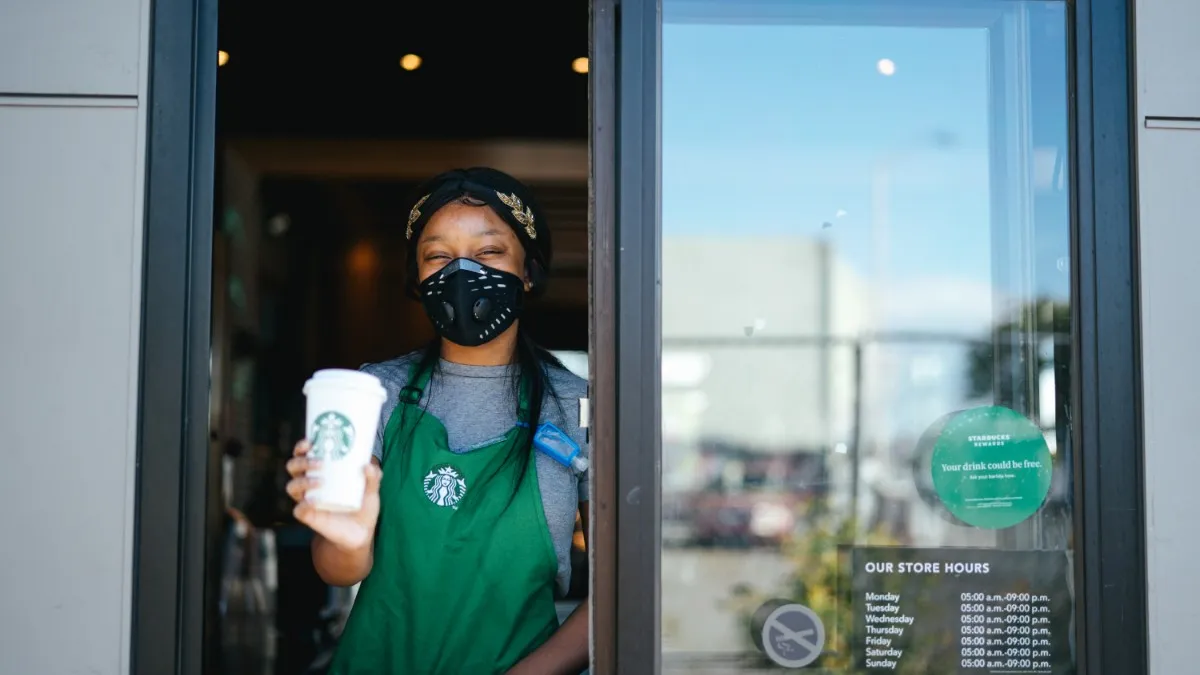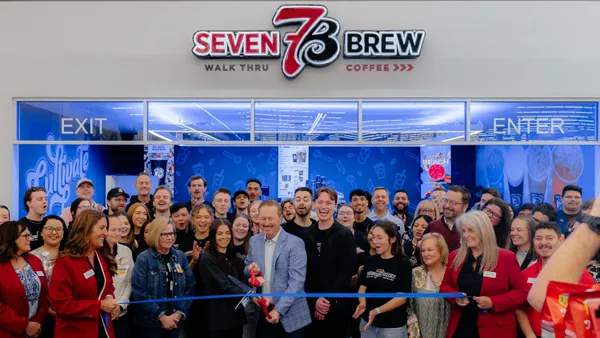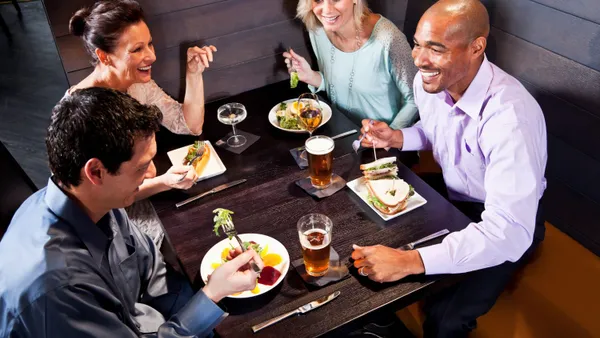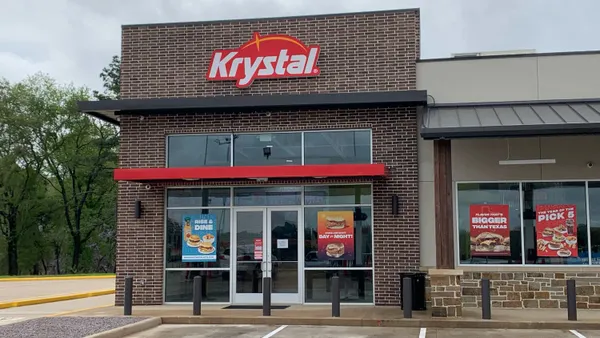UPDATE: June 10, 2020: As part of Starbucks' repositioning plan, the chain expects to close up to 400 company-operated stores over the next 18 months, according to a letter to shareholders. The company will open a greater number of new, repositioned stores in different locations with new store formats. For new development in fiscal 2020 for the Americas region, Starbucks expects to open 300 new stores, down from its original expectation of 600 units.
Dive Brief:
- As part of Starbuck's post-COVID-19 plan, dubbed "Bridge to the Future," the company will accelerate its pivoting toward developments that cater to on-the go-customers, Kevin Johnson, Starbucks CEO, said in a letter to partners on Thursday. That will include relocating lower performing stores from low-traffic malls to locations where there can be a drive-thru.
- The coffee chain will build more drive-thrus within the next 12 to 18 months, shifting from its pre-pandemic timeline of three to five years, It will also provide more curbside and delivery occasions.
- In dense metro areas, Starbucks will create more pickup-only locations, which it first launched in the U.S. in New York City in the fall, a few months after in China last year.
Dive Insight:
One of the major narratives emerging from this latest round of earnings calls was how the COVID-19 crisis accelerated a number of trends, especially digital ordering and takeout. Prior to the crisis, Starbucks hit a peak of 80% orders for takeaway, with a majority placed at the drive-thru or through its app for pickup and delivery, according to its latest earnings call. This focus has been particularly impactful during the novel coronavirus pandemic as the chain has already regained about 60% to 65% of prior-year comparable U.S. store sales while reopening under modified operations and with reduced hours, Johnson said in his May 21 letter. The final week of May, which had comparable sales declines of 32%, represented the sixth consecutive week of improvements from a weekly low of negative 65%, according to Starbucks' June 10 shareholder letter.
While the focus going forward will be to build more stores for on-the-go customers, express pickup stores are not meant to replace traditional locations, however, which explains why the company continues to also seek drive-thru locations, which were particularly important in driving sales during the height of the pandemic. During the last fiscal week of May, over 90% of its U.S. company-operated sales came through the drive-thru window and mobile-order-and-pay, compared to 97% in the final week of April and 60% pre-COVID-19.
"By augmenting the in-store experience with mobile ordering and contactless pickup, we can service significant volumes of customers without having the café seating area actually opened," Johnson said on its Q2 call.
Such a shift in real estate may not come so easily or quickly. A letter written by Starbucks COO Roz Brewer last week shows the company has asked its landlords for a year’s worth of rent breaks for its corporate-owned units starting June 1. This brings into question how quickly Starbucks’ recovery is happening and if that recovery is big enough to enable these accelerated goals. Despite that letter asking for relief, however, CFO Pat Grismer said the company has remained current on its rent payments, "which we believe reinforces our position as a developer of choice."
Still, the company could show that there’s a much quicker return on these new models. Pickup-only locations in metro areas could help the chain save on rent as these locations don't require as much real estate, for example. Because customers aren’t expected to rush back to public spaces, volumes are also likely to be much higher at an off-premise-focused format.
During its recent earnings call, Brewer said that pickup and to-go is a safer operational method for its partners, which aligns with what both customers and employees want.













